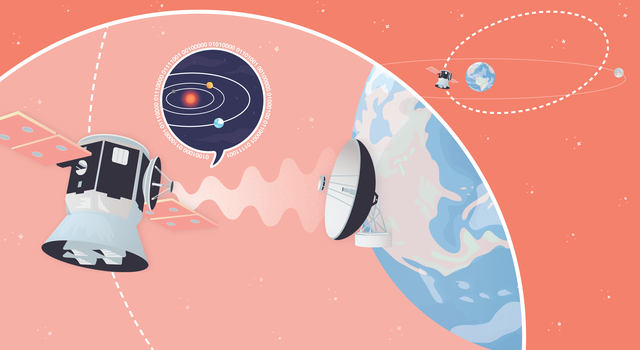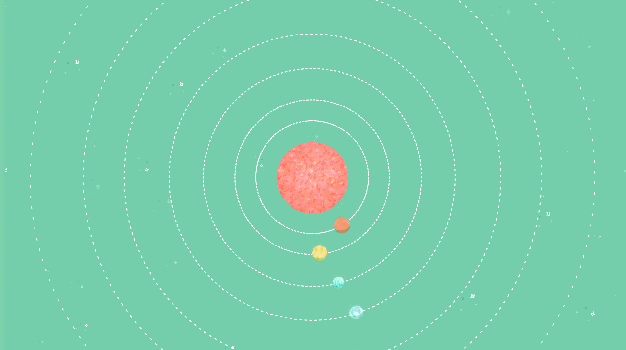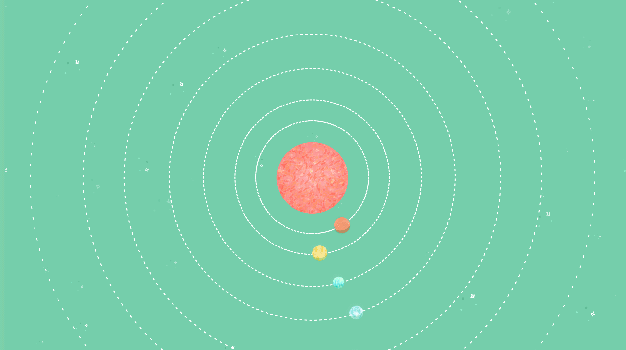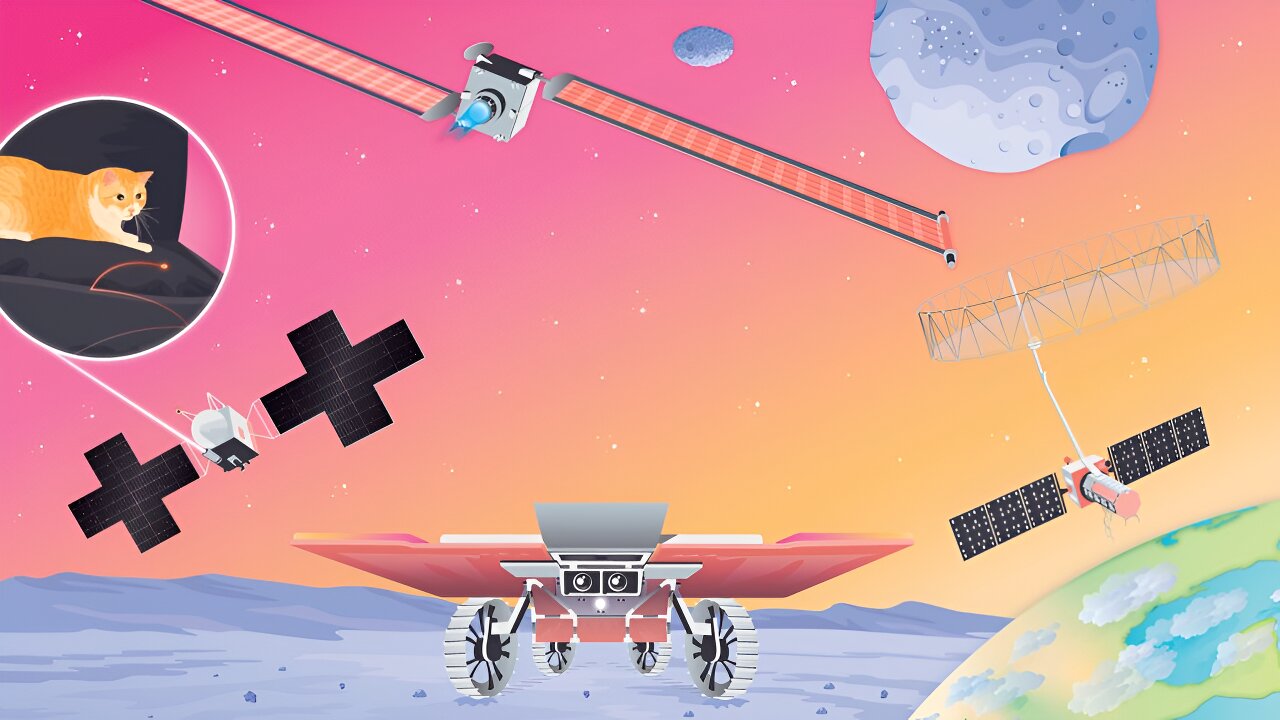Pi Day is a celebration of the mathematical constant pi, which has many practical uses. It's considered an infinite number and its ratio to a circle's circumference and diameter is used in physics, astronomy, engineering, and other fields dating back thousands of years. Pi Day itself was started by physicist Larry Shaw at the Exploratorium science museum in San Francisco on March 14th. The holiday has gained national recognition but it wasn't until NASA created a challenge that involved real-world science and engineering aspects of agency missions, such as determining where to aim a laser message containing a cat video aboard NASA's Psyche spacecraft or calculating the distance for mapping lunar surface with rovers on CADRE technology demonstration. The challenge is accompanied by other pi-related resources for educators, K-12 students and parents.
Pi Day: Celebrating the Endless Possibilities of a Mathematical Constant
It's considered an infinite number and its ratio to a circle's circumference and diameter is used in physics, astronomy, engineering, and other fields dating back thousands of years. Pi Day itself was started by physicist Larry Shaw at the Exploratorium science museum in San Francisco on March 14th.
Pi Day is a celebration of the mathematical constant pi, which has many practical uses.
The challenge is accompanied by other pi-related resources for educators, K-12 students and parents.
The holiday has gained national recognition but it wasn't until NASA created a challenge that involved real-world science and engineering aspects of agency missions, such as determining where to aim a laser message containing a cat video aboard NASA's Psyche spacecraft or calculating the distance for mapping lunar surface with rovers on CADRE technology demonstration.




Confidence
90%
Doubts
- It's not clear if there are any other practical uses of pi besides what is mentioned in the article.
Sources
83%
Can you solve NASA's Pi Day 2024 challenge?
Space.com Meredith Garofalo Thursday, 14 March 2024 10:00Unique Points
- Scientists recently discovered seven Earth-like planets orbiting the star TRAPPIST-1
- Pi is considered a constant number and it's infinite.
- . The NASA Pi Day Challenge is a set of illustrated math problems involving real-world science and engineering aspects of agency missions.
Accuracy
- Scientists recently discovered seven Earth-like planets orbiting the star TRAPPIST-1, similar to the planets in this animation.
- While there are many uses for it in different STEM jobs and fields, it's also very important for engineers and scientists at NASA to help study not just our planet but others across the solar system and even other galaxies. An illustration of NASA's TESS spacecraft, designed to survey the entire sky in search of exoplanets.
- The challenge is a tradition that has been on-going for the last decade put on by NASA's Jet Propulsion Laboratory’s Education Office and features numerous math problems you have to solve using pi. Some of the questions you can answer this year pertain to missions including the Deep Space Optical Communications technology on NASA's Psyche spacecraft, the Double Asteroid Redirection Test (DART) spacecraft, Earth-orbiting satellites, rovers on the Moon, and even the Hubble Space Telescope and James Webb Space Telescope.
Deception (50%)
The article is deceptive in several ways. Firstly, the title of the article implies that it will provide information about NASA's Pi Day challenge when in fact it only provides a brief introduction to what pi is and its importance for engineers and scientists at NASA. Secondly, the author uses sensationalism by stating that solving problems for NASA can help with exploring other planets in our solar system, which is not entirely accurate as there are many factors involved in space exploration. Thirdly, the article provides a list of math problems related to pi but does not provide any context or explanation about how these problems relate to NASA's work. Lastly, the author uses selective reporting by only mentioning some of NASA's missions and excluding others that are also important for studying other planets in our solar system.- The title of the article implies that it will provide information about NASA's Pi Day challenge when in fact it only provides a brief introduction to what pi is and its importance for engineers and scientists at NASA. This is an example of deceptive titling.
Fallacies (85%)
The article contains several examples of informal fallacies. The author uses an appeal to authority by stating that NASA's Jet Propulsion Laboratory has been putting on the Pi Day Challenge for a decade without providing any evidence or context about its credibility. Additionally, the author uses inflammatory rhetoric when they describe solving problems for NASA as- Scientists recently discovered seven Earth-like planets orbiting the star TRAPPIST-1,
Bias (100%)
None Found At Time Of Publication
Site Conflicts Of Interest (100%)
None Found At Time Of Publication
Author Conflicts Of Interest (100%)
None Found At Time Of Publication
95%
What's Pi Day all about? Math, science, pies and more
The Associated Press News Thursday, 14 March 2024 07:14Unique Points
- Pi Day is celebrated on March 14 or 3/14, the first three digits of a mathematical constant with many practical uses.
- Around the world many people will mark Pi Day by eating pies. Pie can be sweet, savory or pizza.
- Pi is considered a constant number and it's infinite.
Accuracy
- <br>While there are many uses for it in different STEM jobs and fields, it's also very important for engineers and scientists at NASA to help study not just our planet but others across the solar system and even other galaxies. An illustration of NASA's TESS spacecraft, designed to survey the entire sky in search of exoplanets.
- <br>The challenge is a tradition that has been on-going for the last decade put on by NASA's Jet Propulsion Laboratory’s Education Office and features numerous math problems you have to solve using pi. Some of the questions you can answer this year pertain to missions including the Deep Space Optical Communications technology on NASA's Psyche spacecraft, the Double Asteroid Redirection Test (DART) spacecraft, Earth-orbiting satellites, rovers on the Moon, and even the Hubble Space Telescope and James Webb Space Telescope.
Deception (100%)
None Found At Time Of Publication
Fallacies (100%)
None Found At Time Of Publication
Bias (85%)
The article is biased towards celebrating Pi Day and its practical uses. The author mentions the holiday's origin and how it has become more recognized in recent years but does not provide any critical analysis of these events or their significance.- ]Manager Stephen Jarrett prepares pies on a counter at Michele’s Pies, Wednesday, March 13, 2024[
- NASA uses pi on a daily basis. It's key to calculating orbits,
Site Conflicts Of Interest (100%)
None Found At Time Of Publication
Author Conflicts Of Interest (0%)
None Found At Time Of Publication
78%
NASA Pi Day challenge serves up a mathematical marvel
NASA Perseverance Mars Rover News Site Powered by Phys.org Science X Friday, 15 March 2024 10:07Unique Points
- . The NASA Pi Day Challenge is a set of illustrated math problems involving real-world science and engineering aspects of agency missions.
- . It helps students use the mathematical constant pi to determine where the DSOC technology demonstration aboard NASA's Psyche spacecraft should aim a laser message containing a cat video so that it can reach Earth (and set a NASA record in the process).
- Additionally, the challenge helps calculate the distance a small rover must drive to map a portion of the lunar surface as part of NASA's CADRE technology demonstration that is headed to the moon.
Accuracy
- The challenge also allows students to figure out how much data will be captured by NISAR satellite each time it orbits our planet, monitoring Earth's land and ice surfaces in unprecedented detail.
Deception (100%)
None Found At Time Of Publication
Fallacies (85%)
The article contains several examples of informal fallacies. The author uses an appeal to authority by stating that NASA is releasing the annual Pi Day Challenge and providing resources for educators, K-12 students, and parents. This implies that NASA's release of these materials lends credibility to them. Additionally, the author uses inflammatory rhetoric when they describe eating pizza or pie as an excuse to celebrate Pi Day instead of honoring it with mathematics.- The article contains several examples of informal fallacies.
Bias (100%)
None Found At Time Of Publication
Site Conflicts Of Interest (50%)
The article discusses NASA's Pi Day challenge and the technology demonstration aboard NASA's Psyche spacecraft. The author is Science X which has a financial tie to JPL-Caltech as they are both owned by Caltech Corporation.- Double Asteroid Redirection Test (DART) spacecraft crash into Dimorphos asteroid surface
- .Earth land and ice surfaces monitoring in unprecedented detail
- .NASA-ISRO Synthetic Aperture Radar (NISAR)
Author Conflicts Of Interest (0%)
The author has multiple conflicts of interest on the topics provided. The article mentions NASA Pi Day Challenge and Double Asteroid Redirection Test (DART) spacecraft crash into Dimorphos asteroid surface which are both projects that Science X is involved in.- .03C0 record in the process
- Cooperative Autonomous Distributed Robotic Exploration (CADRE) technology demonstration on lunar surface
- .NASA-ISRO Synthetic Aperture Radar (NISAR)